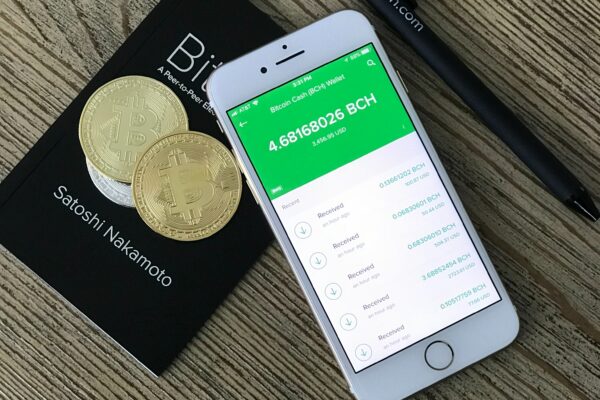Whenever a start-up or a company needs money for further growth and development, they go either to venture funds, private investors or ask for a bank loan. However, a few conditions must be met before start-ups become eligible for a loan. For example, if a company is too early or too late in its development, it may not qualify for a loan.
The situation is different for crypto start-ups. Unlike traditional businesses, crypto companies have a wide variety of options to raise funds. It doesn’t matter that the traditional options, such as Angels and venture funds are unavailable. On the contrary, crypto start-ups have the benefit of being able to raise money in whichever way they find suitable.
Let’s look at the most popular ones in more detail and briefly mention other options since the difference between them is rather slender.
First thing first is, of course, venture capital. Let’s recap how this works. Venture capital funds are a group of investors who pool their money and then bet on start-ups. The interested party that seeks an investment looks for such investors, and sends them a document, outlining the details of their project as well as all the risks and benefits involved in investing with them. If the investors become interested, they give money to the start-up. Crypto start-ups have the advantage of being able to raise funds from both – ordinary venture funds and crypto companies (such as Coinbase Ventures, for example).
For investors, venture capital is the most popular option, as it offers the most potential return on investment. They typically look for projects that they believe will yield the best returns and in exchange for money ask for shares in the company, enabling them to exit with a quick profit. On top of that, venture investors rarely invest in ideas, so a start-up needs to have at least an MVP ready before asking for money.
Business Angels, the second option, are somewhat similar to venture funds, but they’re usually represented by private investors, which, after the investment, usually take part in managing the project’s development. It’s common practice for them to ask for and get partial ownership in exchange for money.
On the one hand, both these options have been on the market for ages. They’re well-known and reliable. On the other, giving someone influence or even control over the project may seem less appealing. That’s why there’re new emerging approaches to raising funds, which were not available before.
Before we jump into looking at the ways to raise funds in the crypto market, we need to make a brief pause/intermission and first look at the difference between ‘tokens’ and ‘coins.’ You’ll see why.
‘Coins’ and ‘tokens’ are usually used interchangeably, however, there’s a subtle difference between the two. Both are used to transfer value and can be used as a means of payment, just like ordinary fiat currency or shares. But if a ‘coin’ is a straightforward money equivalent, a ‘token’ usually has a wider functionality – to grant a right to vote, to deliver value to investors and it’s not a currency.
Now let’s dive into the options available solely to crypto start-ups. The most heard of and the most basic form of crowdfunding is the Initial Coin Offering. When a start-up is looking for an outside investment, it creates a certain number of cryptocurrency tokens or coins, unique to the ICO, which investors will receive in return for the investment. Investors can use fiat or other tokens to buy into the project. However, because of many fraudulent projects and the lack of investors’ protection, this route is rarely used now. ICO is now being replaced by IEO and IDO.
What’s IEO, then? IEO or Initial Exchange Offering is when a project gets listed on an exchange without having to go through an ICO route. This way the funds can be raised directly through the exchange user database. The advantage of investing through an IEO is that the exchange only allows carefully chosen projects (both, the project team and the investors have to pass KYC and AML, which significantly reduces the risks of fraud) and its reputation serves as an additional guarantee. Additionally, investors are guaranteed that the tokens they receive for their investment, will be listed on the exchange.
IDO or Initial DEX Offering is somewhat similar to IEO. The projects are also carefully chosen
before their tokens are accepted to be listed on the exchange. The key difference is that it’s the DEX community that decides via voting whether to allow a certain project to be listed on the exchange. And, since it’s a DEX, funds are controlled by smart contracts and no KYC and AMC are required as there’s no centralised organisation to process them.
So far, we’ve only covered the most well-known methods of crowdfunding. However, there are so many more ways. Let’s briefly look at some of these too.
– Decentralised Autonomous Initial Coin Offering is a relatively new method, which incorporates some of the DAO (decentralised autonomous organisation) elements. Digital companies looking for investments have their rules codified in smart contracts, which makes their management transparent and auditable. Additionally, all the raised funds are not released at once to the project owner. Instead, the contributors have the power to decide when to make the investment funds available and how much to release and how often.
– Initial Airdrop Offering is a method when newly created project coins are distributed or ‘airdropped’ to targeted participants’ wallets free of charge. To qualify for the ‘airdrop’, participants should fit certain criteria. For example, pre-holding of specific coins or participating in marketing activities for the project. Provided there’s interest from the users and the project leads to trading the coin, there’s a potential for value appreciation. The project can then sell its coins to raise funds.
– Security Token Offering is fundraising through a ‘security’ token, which entitles its owner to either a share of the profit or a stake within the business itself or some other form of reward in exchange for the investment.
– Initial Convertible Coin Offering – a project looking for investment offers a ‘tokenized convertible warrant’, regulated by a prospectus, which first needs to be approved by a public authority. In return for money, investors will get the right to convert these tokens into company shares some time after the issuance.
– Asset Token Offering – the funds raised are converted into services or products and to make sure that the project develops and operates as promised, the assets are supervised by a third party. The public, wishing to participate, can purchase tokens in advance.
– Equity Token offering allows ‘off-chain’ companies to issue part of their shares via blockchain. Investors for their investments receive pro-rata ownership of a company, including voting and dividend rights.
Crowdfunding in the crypto market is peculiar indeed, in the sense that crypto start-ups have a variety of ways to raise funds for further development. They no longer have to adhere to regulated capital-raising processes required by venture capitalists or banks. As for prospective investors – crypto market crowdfunding opens up investment opportunities to virtually anyone by enabling small or fractional sales, thus significantly democratising investments.




